Summer, winter, M+S: This is what you need to know about your tires when it snows

Chaos reigns on the roads whenever snow hits the Lower Mainland.
Cars slip and slide in the streets like a puppy on ice skates. The less trustworthy rides end up in the ditch or are abandoned at the bottom of the slightest snow-covered incline — yes, the Lions Gate Bridge is a bit of a hill — and hazard lights blink more furiously than the flurries coming down.
And so comes the perennial question of tires. B.C. Attorney General David Eby was asked this week, after a series of snowstorms led to a spike of 18,000 dial-a-claim calls to ICBC, whether the province would consider making winter tires mandatory across B.C.
"It's certainly something I'll be asking ICBC about, following some of what I saw on the road over the last couple of days, and I'm sure many British Columbians would nod along with that idea," Eby said.

Under the current rules, drivers in most of Metro Vancouver and along the southeast coast of Vancouver Island can legally get away with using summer tires.
Winter tires are required on most highways in B.C. from Oct. 1 until the end of either March or April, depending on the route.
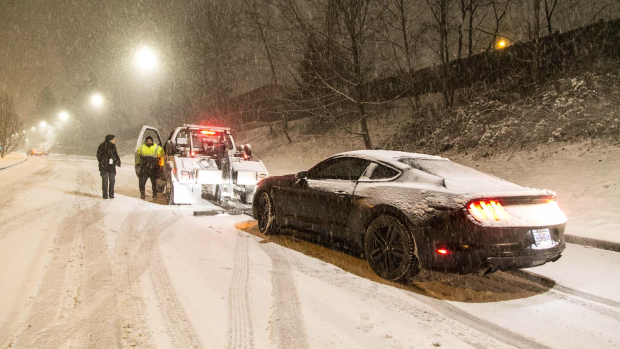
So, what's the difference? And are all-season tires enough?
This is a summer tire:

It's got a smooth tread and is meant to stick to dry pavement in reasonably warm conditions. This is perfectly legal, though not advised, in most of Metro Vancouver any time of the year. Just don't try using it to get up to one of the ski hills, though.
This is an all-season tire, rated M+S for mud and snow:
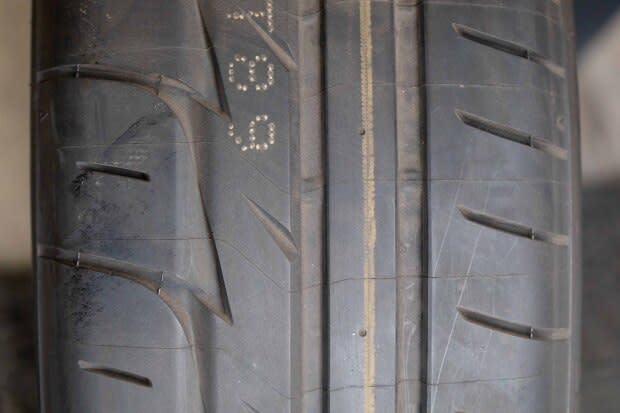
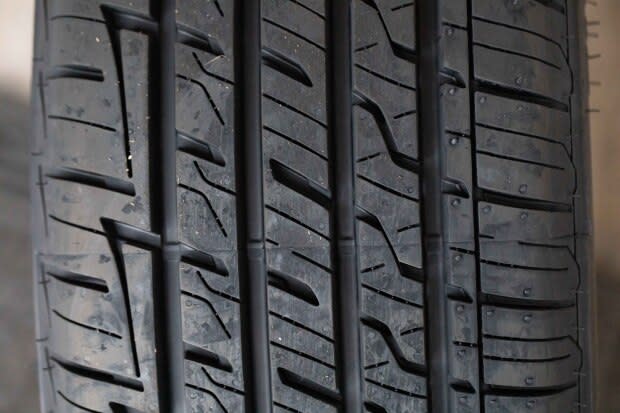
These can be used on many winter highways, but they aren't technically winter tires.
Once the temperature drops below about 7 C, the rubber becomes harder and doesn't grab as well. These tires have the M+S symbol on the side.
And this is a winter-rated tire:


The deep tread and rubber is designed to work in icy weather. These tires have a little snowflake within a three-peaked mountain mark.
And this is an Aston Martin sports car stuck in the snow:
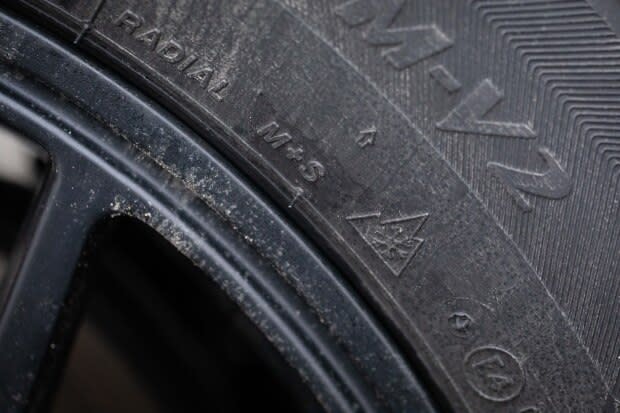
What about all-wheel drive?
All-wheel drive and four-wheel drive vehicles are better at accelerating in the snow and getting out of a tight spot when stuck. But when it comes to stopping, it doesn't make much difference.
An all-wheel drive car with M+S tires driving a mellow 30 km/h will take about 10 metres to come to a complete stop. A full rated winter-tire would shorten that.
"[And that] may be the difference between a collision and not a collision," said Kurtis Strelau, the regional general manager for Young Drivers of Canada.
Watch the video below to learn the difference between tires:
Bald tires are bad
Of course, it doesn't matter what kind of tires are on your car if they're worn out.
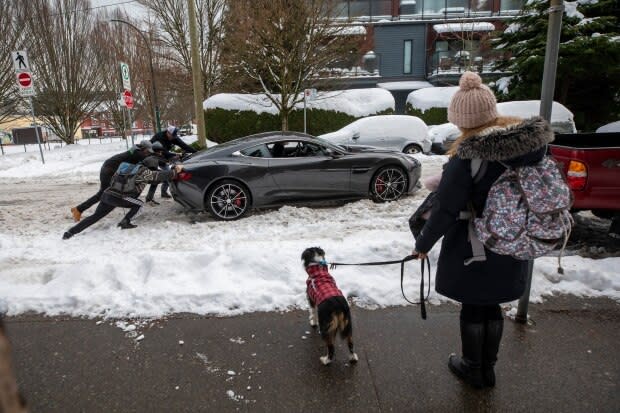
Check the wear bars. Or do the "toonie test." If the tread is as deep as the bear's paws, great. If the tread doesn't cover the silver part of the coin, buy a new set.
"It's not worth your life, or that of somebody else, if your car loses control and it's because of your tires," Strelau said.


